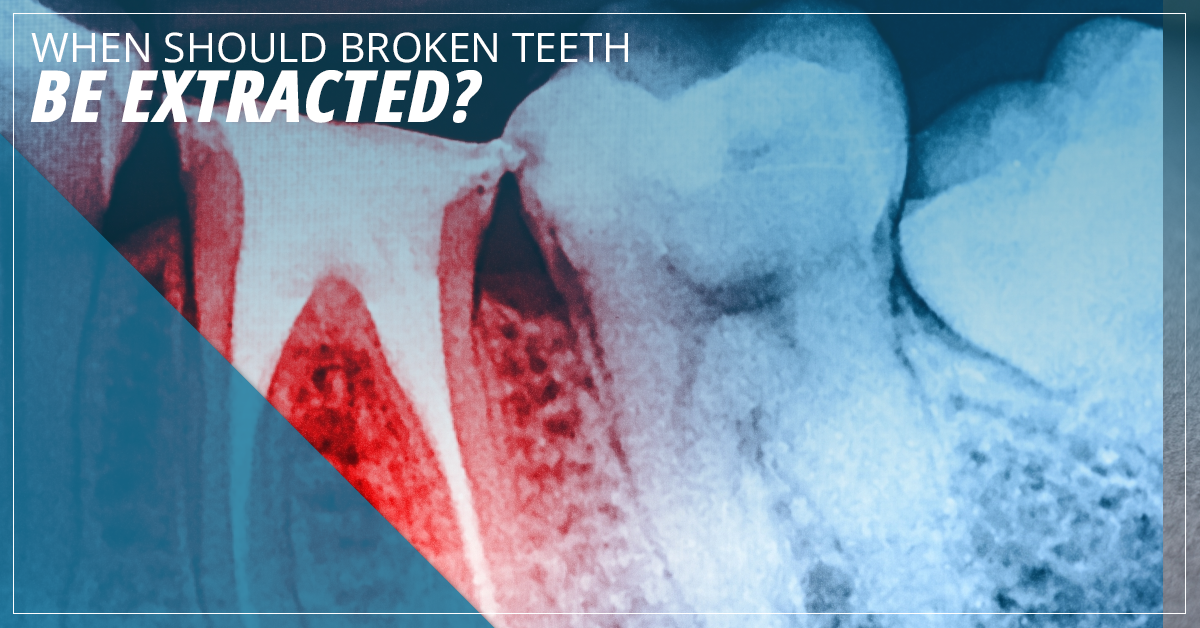
If you’ve ever chipped or broken a tooth, it can be a scary situation. Ideally, you want to hang on to your natural teeth as long as possible unless they’re decaying or have developed periodontal disease, which could compromise your oral health. On the other hand, you don’t want to necessary jump straight to extraction as your only solution. In this blog, we’re going to cover damaged teeth so that you’ll have a good idea of what solutions you have available to you.
What Causes A Damaged Tooth?
There are a number of things that can result in a chipped or damaged tooth. This could include pressure from grinding teeth, biting down on a hard food like nuts or candy, a sports injury, or car injury. Oftentimes, when a tooth becomes damaged, people don’t even notice until someone sees it. However, if the damage is on the top of the crown, you may feel it with your tongue.
Types Of Damaged Teeth
Craze lines are very small cracks in the top layer of your teeth, the enamel. These are not very noticeable and usually do not require any treatment.
A fractured cusp is a crack starts near a dental filling. Since this crack doesn’t affect the pulp of your tooth, it’s almost always painless.
Vertical cracks that haven’t reached the gum line can be serious, but if it has made it to the gum line, you may need to get the tooth extracted. Contact a dentist immediately if you have a vertical crack in your tooth.
Split teeth are very serious medical emergencies and result from a crack that goes all the way from the top of the crown to below the gum line. If the separation is severe enough, you’ll most likely need an extraction.
Root fractures occur below the gum line. Since you can’t see these cracks, you may only discover it because of the pain or because it got infected.
Teeth that don’t need to be removed can be fixed in one of several ways.
Fillings
A filling is just what it sounds like: a way to fill in a missing part of your tooth. Just like when you get a cavity and fill in the decayed area, you do the same with a crack or chip in your tooth. Fillings allow your teeth to regain the strength and durability they had before the incident and prevents bacteria from getting inside.
Crown
A crown or a “dental crown” is placed over a tooth in order to improve its strength, shape, and size. Dental crowns are commonly used when there is a crack in the tooth because it holds it together and prevents it from breaking. However, this is not always the best solution to a broken tooth, especially if it risks being infected.
When Can A Tooth Not Be Saved?
The three most common reasons for removing teeth are disease, trauma, and crowding, according to the American Dental Association. If your dentist indicates that the crack is too severe or there’s a chance it will be infected, you will most likely need to have it extracted. Once you have a tooth extracted, you will have many options for tooth replacement.
Bridge
A bridge is designed to replace one or two teeth. A bridge is designed to be fixed onto surrounding teeth and there is a fake crown that goes over the area where your tooth is missing. What this means is that the new tooth is supported by your surrounding teeth. This is not always ideal because it could damage your natural teeth resulting in more problems.
Dental Implant
A dental implant is the most natural and effective replacement for a natural tooth. The implant goes directly into the jaw and is held in place using the same periodontal function as your natural tooth root. If you are missing a tooth due to an extraction, always go to a periodontist who specializes in dental implants like Same-Day Implants. We’ll perform a comprehensive consultation so that you understand your oral health and what all of your options are moving forward. Give us a call today if you have any questions.








